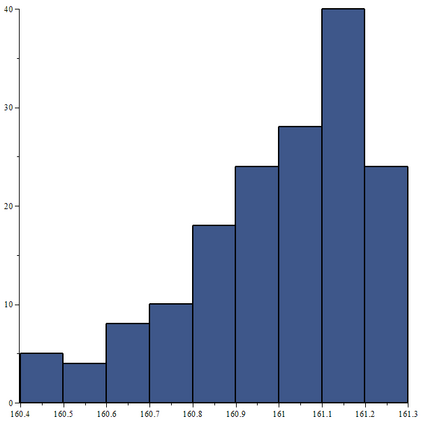In this article we develop an algorithm which computes a divisor of an integer $N$, which is assumed to be neither prime nor the power of a prime. The algorithm uses discrete time heat diffusion on a finite graph. If $N$ has $m$ distinct prime factors, then the probability that our algorithm runs successfully is at least $p(m) = 1-(m+1)/2^{m}$. We compute the computational complexity of the algorithm in terms of classical, or digital, steps and in terms of diffusion steps, which is a concept that we define here. As we will discuss below, we assert that a diffusion step can and should be considered as being comparable to a quantum step for an algorithm which runs on a quantum computer. With this, we prove that our factorization algorithm uses at most $O((\log N)^{2})$ deterministic steps and at most $O((\log N)^{2})$ diffusion steps with an implied constant which is effective. By comparison, Shor's algorithm is known to use at most $O((\log N)^{2}\log (\log N) \log (\log \log N))$ quantum steps on a quantum computer. As an example of our algorithm, we simulate the diffusion computer algorithm on a desktop computer and obtain factorizations of $N=33$ and $N=1363$.
翻译:在此文章中, 我们开发了一种算法, 计算整数一美元之差, 假设它既不重要, 也不是质数的能量。 算法在限定的图形中使用离散的时间热扩散。 如果$$有美元不同的质因子, 那么我们的算法成功运行的概率至少是$p( m) = 1- (m+1) /2 ⁇ % 美元。 我们计算了算法在古典或数字、 步骤和扩散步骤方面的计算复杂性, 这是我们在这里定义的概念。 正如我们将在下文中讨论的那样, 我们主张, 扩散步骤可以而且应该被视为与量子计算机运行的算法的量级步骤相仿。 有了这个算法, 我们的计算算法在最大值为$( log N) = 确定性步骤, 最多为$( ( log N) = 33) 和 最多为$( log) 桌面的传播步骤, 并且隐含的常数。 相比之下, Shor 算法在大多数的 $( $N) N\\\\\\\\\\ log\ asqualqalqal asqual squal squal squal squal sqol) 中, 我们在计算机的折中的算中使用了 和 等量数的算法。






